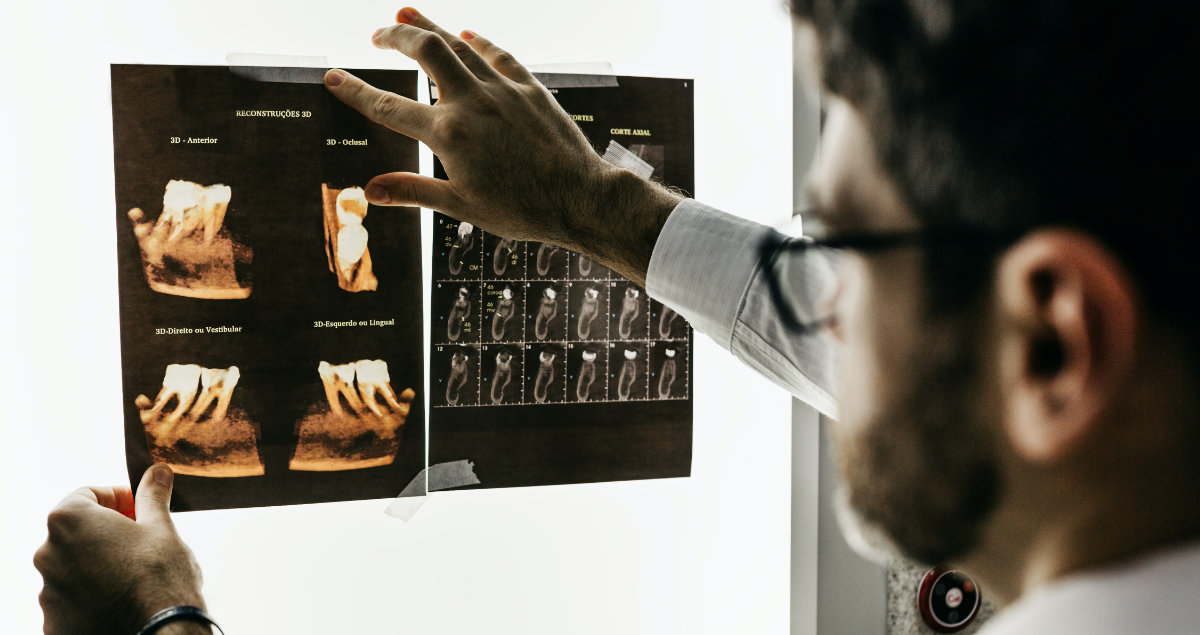Biomimetic Dentistry & The Tooth Cycle Of Death

A dental restoration that’s done traditionally will involve removing healthy tooth structures to restore the tooth. However, doing this will weaken the remaining teeth and result in what biomimetic dentists call “the tooth cycle of death.”
It is this same cycle that leads to the failure and loss of teeth in many patients. But there is good news: biomimetic dentistry now allows for the maximum conservation of the tooth’s structure. Biomimetic dentistry uses advanced and powerful adhesive techniques to retain teeth much longer, which means that restorations are guaranteed to last a lifetime.
Traditional Dentistry: Crowns And Silver Amalgam Fillings
Silver crowns and fillings have been the traditional approach to dentistry. Still, these require a lot of tooth preparation, including removing healthy tooth structure to accommodate the restorative material’s minimum thickness.
For example, a silver filling will need to be 1.5 mm thick at the very least for it to withstand chewing. On the other hand, crown restorations will also need to be at least 1.5 mm, depending on the material used.
Also, dental restorations that are performed traditionally will rely on “mechanical retention,” which refers to the design and shape of the tooth preparation responsible for keeping the restoration from falling out. This only leads to the removal of healthy tooth structures to secure and hold everything in place. Any tooth that will need to have a crown placed will have to be reduced at a 360-degree angle all over to keep the crown steady.
Apart from these drawbacks, performing a traditional restoration can’t compare to a tooth’s natural biomechanics. Amalgam fillings, which are silver metal fillings, are made from metal alloys that aren’t structured anything like the dentin and enamel of a tooth. Such options don’t restore the biomechanics and strength of a natural tooth, so any tooth that’s restored using these fillings won’t go back to its original strength.
Even the smallest cavity can impact a 40% reduction in its strength, and a silver filling won’t be able to restore the loss of strength in that tooth. Likewise, using a crown restoration made of porcelain and metal are highly rigid and stiff.
On the other hand, natural teeth have just the right amount of flex and stiffness from the combination of dentin and enamel. Getting a rigid or stiff restoration can only lead to a catastrophic failure when the metal crown is fractured along the gumline.
The Tooth Cycle Of Death In Dentistry
Referred to as “The Tooth Cycle of Death,” this process describes the scenario that patients usually find themselves in when going through the traditional approach to dental procedures:
- When a cavity is detected, it will require a filling
- The filling (usually made of silver) is placed. However, a healthy tooth structure will need to be removed to accommodate the silver filling’s needs. As such, the tooth is weakened significantly. If the dentist used biomimetic restoration, the optimum tooth structure could be conserved.
- Using the structurally compromised tooth will only put stress on it, and cracks will start to form. In time, a section of the tooth will suffer from a fracture.
- Because the minimal requirements of a crown can’t be met under the remaining structure, and as a result, the tooth will require a root canal, core, and post to prepare the crown for adequate retention.
- While the root canal, core, and post are finished, the tooth isn’t necessary anymore. These steps are crucial in keeping the crown in place as it will only fall off if not all steps are met. With biomimetic restoration, however, the use of adhesive dentistry could’ve avoided having to perform the root canal, core, and post, since the adhesive would’ve kept the restoration from falling off using a natural, strong bond.
- The last crown is placed, which results in an extraordinarily rigid and stiff solution and is nothing like the natural tooth’s biomechanics.
- The tooth’s stiffness results in the transmission of destructive forces to the root of the tooth and the structure underneath the crown. This series of events ultimately lead to the tooth fracturing and no longer being usable.
- The tooth will then need to be extracted, and the final option left is to perform an implant restoration. The unfortunate truth is, this whole cycle could’ve been prevented through the use of Biomimetic Dentistry.
Biomimetic Dentistry Can Prevent The Tooth Cycle Of Death
Thanks to the advances in technology, specifically in adhesive dentistry, biomimetic dentistry techniques now give patients the chance to preserve as much healthy tooth structure as possible.
With this process, only the decayed and damaged parts of the teeth are removed, and the minimum thickness needed for a biomimetic restoration doesn’t require dentists to remove any healthy root structures. Biomimetic Restoration forms an adhesive bond that eliminates the need to use mechanical retention and all of the tooth’s excessive preparation.
Through Biomimetic dentistry, experts are able to make full use of the bond’s strength during restoration to the tooth structure on the same levels as natural enamel and natural dentin. This results in restorative techniques and materials that match the biomimetics and properties of natural teeth closely. Ultimately, Biomimetic Dentistry is the solution for failures and problems that are the common pitfalls of traditional dental restorations.